By Theo Stroomer
20 May 2014
If America’s first marijuana legalization experiment is any indication, the end of prohibition can start smoothly.
Since retail sales of recreational marijuana began in Colorado, revenues from marijuana sales have continued trending up. At the same time, crime in Denver, home of most recreational marijuana shops in the state, has dropped nearly across the board.
Colorado and Denver’s experiment with legalization is, in other words, going well. The state is seeing its coffers filled with some extra revenue, as expected. And crime, despite warnings from law enforcement officials, isn’t rising.
Marijuana revenue is trending up
The state sold nearly $19 million worth of recreational pot in March, up from $14 million in January and February. For all three months, Denver County made up about half that revenue.
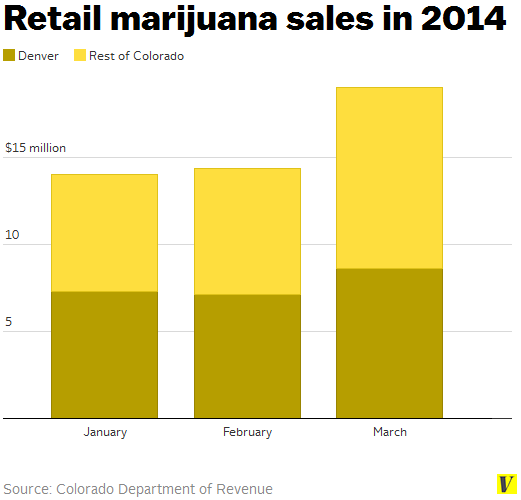
That Denver makes up such a huge chunk of the state’s marijuana revenue isn’t really surprising. As of May 1, the city’s stores held roughly 58 percent of the retail marijuana licenses across the state.
Violent and property crimes are down in Denver
The Denver Police Department’s crime data shows that violent crime from January through April dropped by 5.6 percent compared to the same time period last year, and robberies in particular fell by 4.8 percent.

Major property crimes also dropped by 11.4 percent, with burglaries falling by 4.7 percent, compared to the same time last year.
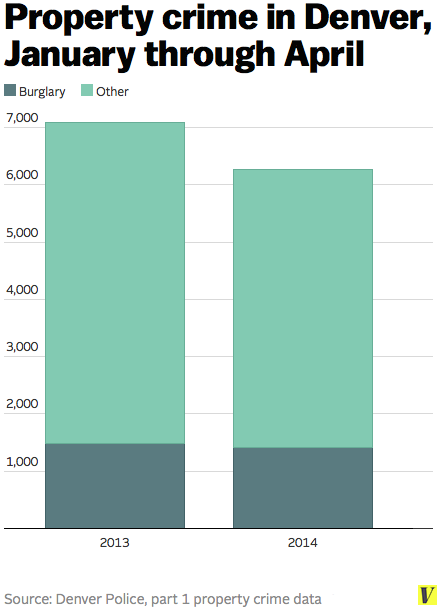
This doesn’t mean that legal pot caused less crime, since correlation does not equal causation. But these trends are actually better than my previous check-in with Denver’s crime rates. As I reported back then, Denver’s crime rates didn’t skyrocket during the first two months of retail sales. Now, however, crime seems to be dropping almost across the board, even as federal prohibition forces marijuana businesses to engage in risky banking practices.
“”This is a great opportunity for us to find out what happens when you legalize a substance like marijuana””
All of that is despite warnings from law enforcement officials that crime, particularly robberies and burglaries, would rise following legalization. Two months back, Denver District Attorney Mitch Morrissey told me that legal marijuana was already causing more crimes. But if that’s the case, it’s not showing up in the city’s crime statistics.
Some opponents of legalization, however, have warned that it could take much longer for legal marijuana’s crime effects to show up. Tom Gorman, director of Rocky Mountain High Intensity Drug Trafficking Area, said in a previous interview that the full effects won’t surface until three to four years at best.
“This is a great opportunity for us to find out what happens when you legalize a substance like marijuana,” Gorman said. “Just wait and watch what happens in these labs, and then you can make a decision based on data and facts and not rhetoric.”
Does marijuana legalization lead to more marijuana use?
Since only two states (Colorado and Washington) and a few countries allow recreational marijuana, there’s not a lot of research on whether full legalization leads to more marijuana use.
Most of the research instead focuses on what happens after marijuana decriminalization and medical marijuana legalization, largely because way more states and nations have passed such laws. The results of those studies are a bit mixed.
A 2012 study looked at marijuana use data among teenagers between 1993 and 2009; it concluded medical marijuana legalization did not lead to more marijuana use among high school students. Similarly, another study found medical marijuana legalization led to more marijuana use among adults 21 and older but no discernible effect among teenagers.
Monitoring the Future’s data also shows nationwide marijuana use dropped then slightly fluctuated among high school students after 1995, a year before California became the first state to legalize medical marijuana.
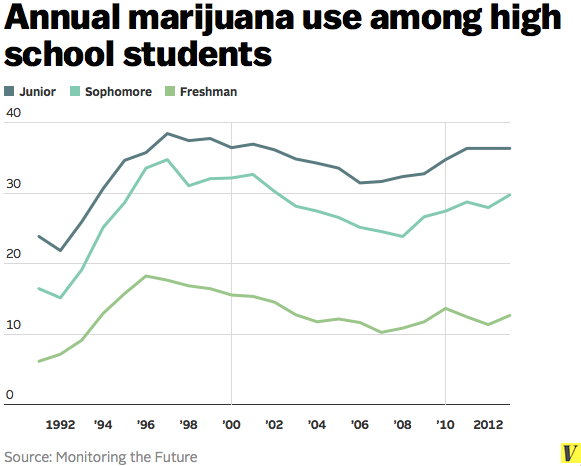
The trend shows up in specific states that legalized medical marijuana, according to government data. Marijuana use among Colorado youth, for instance, dropped from 22.7 percent to 22.0 percent between 2005 — the earliest year for which data is available — and 2011. (Colorado legalized medical marijuana in 2001, but dispensaries did not begin popping up until 2007.)
Meanwhile, a study found a slight increase in marijuana use during the first five years of decriminalization in Australia, and people appeared more likely to start using marijuana at an earlier age during those five years. But after five years of decriminalization, the policy seemed to have no impact on marijuana use among youth or adults.
One report found drug use fell among teenagers in Portugal following the decriminalization of all drugs, but use ticked up for young adults aged 20 to 24.
This, for now, is what we know about usage after medical marijuana legalization and decriminalization. But we’re still waiting to see whether full legalization leads to an uptick of use in places like Colorado and Washington.


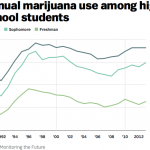
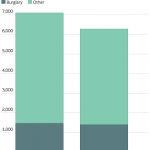
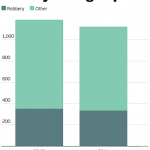
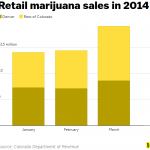


 Creative Commons Attribution
Creative Commons Attribution